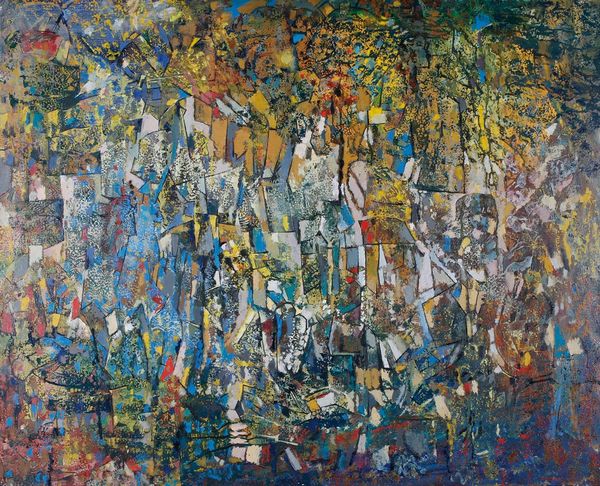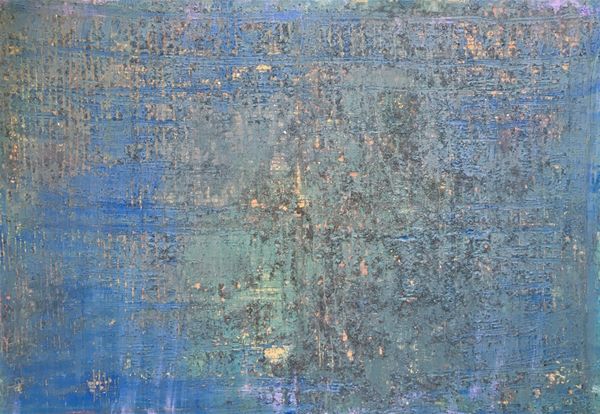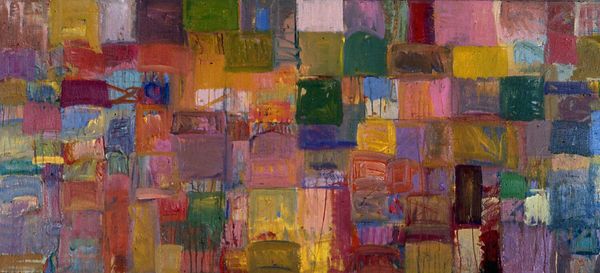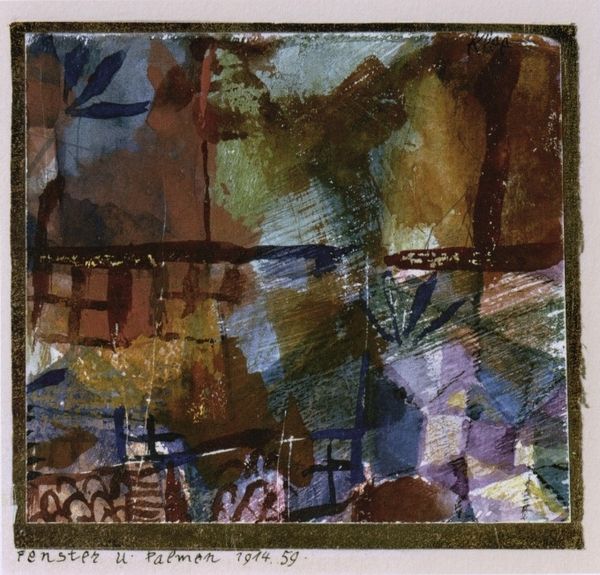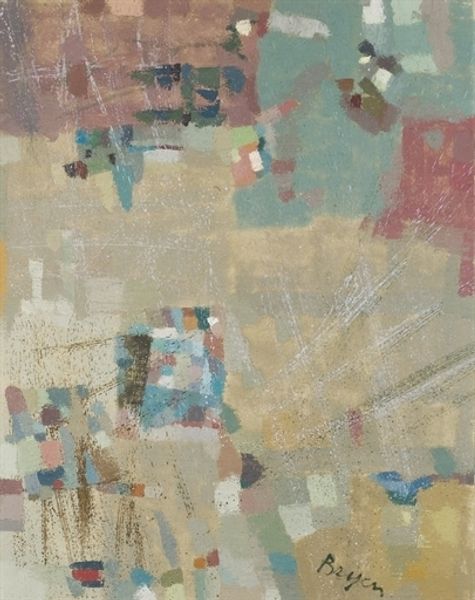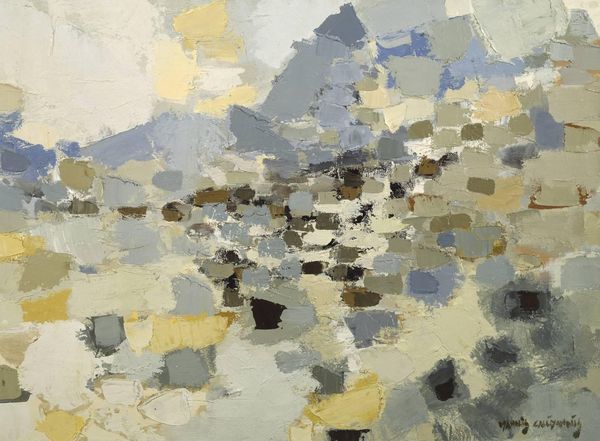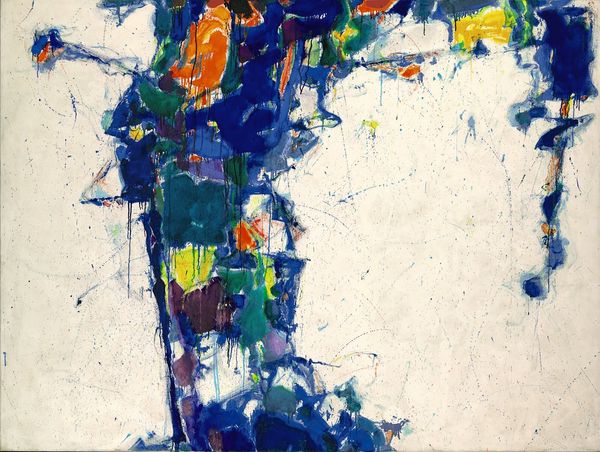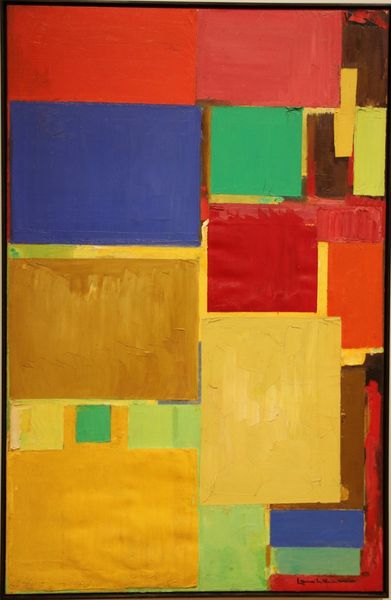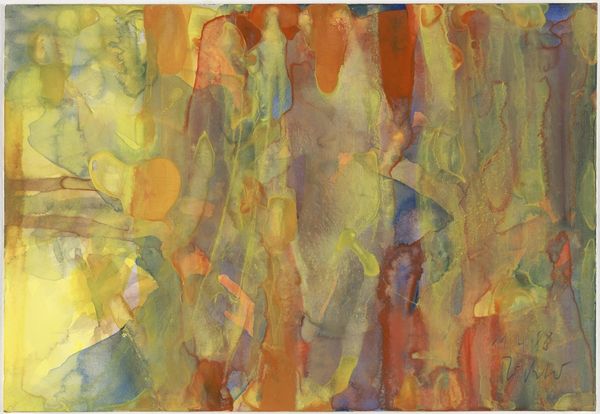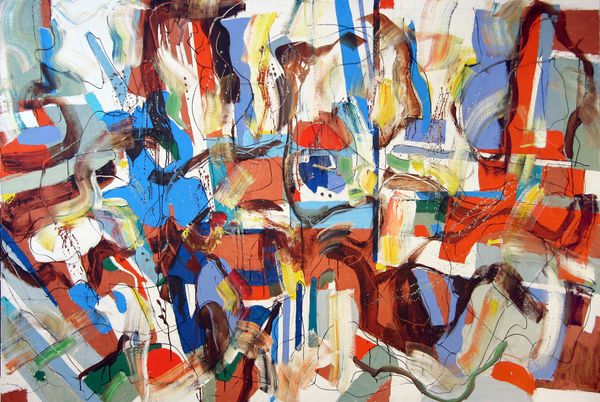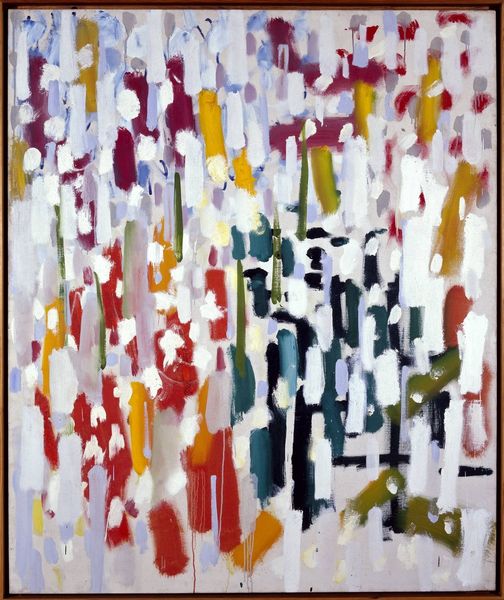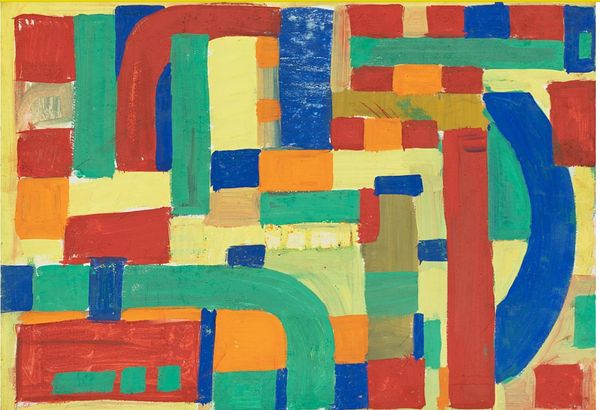
mixed-media, acrylic-paint
#
abstract-expressionism
#
abstract expressionism
#
mixed-media
#
landscape
#
acrylic-paint
#
acrylic on canvas
#
geometric
#
abstraction
#
modernism
Copyright: Roger Bissière,Fair Use
Editor: This is Roger Bissière’s “Composition in Blue,” created in 1959 with mixed media. It’s immediately striking because, despite the title, there's this explosion of earthy greens and browns amidst the blues. How do you interpret this work? Curator: Bissière’s abstraction, particularly within the context of postwar Europe, moves beyond a purely formal exercise. He was working in a period grappling with the legacies of conflict. So, how does the layering of colour – the blues pressing against earthy tones – evoke, perhaps, the push and pull of memory and trauma in that era? Consider how abstraction provided artists space to process and reflect without direct representation. Editor: That’s interesting. I hadn’t thought about the post-war context so explicitly, but I see what you mean. It's almost like the colours are fighting for space. Is there a connection to be made with landscape paintings? Curator: Absolutely. Though abstract, does the title guide our perception to look at its landscapes and memories of specific places or feelings toward those spaces? Bissière’s work encourages us to contemplate identity, memory, and place. What societal conventions are subverted in the lack of easily discernible form? Editor: So, it’s not just about the visual, but about prompting deeper questions about identity and history? It also makes you think about who gets to be represented in art. Curator: Exactly! How does abstract art challenge us to broaden our understanding of what art can be and who it speaks to? Editor: That's given me a lot to think about. I came in looking at the colours and composition, and now I see it’s deeply connected to historical context and social issues. Curator: And hopefully, it makes us question how we read art through our own contemporary lens. Always situate the work within its context, but also acknowledge how that context impacts you today.
Comments
No comments
Be the first to comment and join the conversation on the ultimate creative platform.
